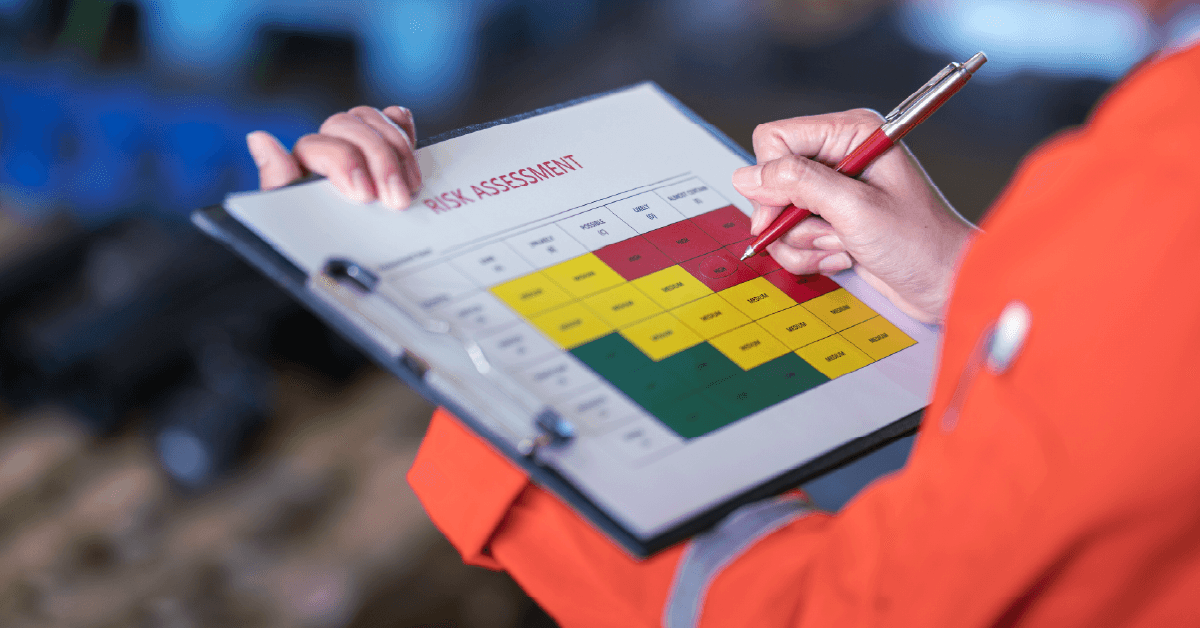Using a JSA to Write Safety Inspection Questions


Job safety analysis (JSA) is an essential part of any manufacturer’s health and safety management system, helping identify high-risk processes and controls to prevent workplace injuries.
To get the most from this tool, however, you need to go beyond just filling out a JSA worksheet. That means not just implementing new controls, but also making sure they’re held in place.
Plant floor safety inspections play a critical role in closing the loop, ensuring process compliance and avoiding incidents. Let’s explore how to use JSAs to write safety inspection questions, and how a digital safety inspection app can make the process more efficient.
Watch a free on demand webinar on Why to Take Safety Inspections Digital This Year
What is a Job Safety Analysis (JSA)?
A job safety analysis (JSA) is a tool for identifying hazards in a job process and the most effective controls to eliminate or mitigate those hazards. A JSA requires:
- Observing a job or procedure
- Breaking it down into individual steps
- Assessing what could go wrong at each step
- Documenting preventive measures required to control hazards identified in each step
Where JSAs Fit in the Safety Management Process
For JSAs to work, they can’t just be forms that sit unused in a binder somewhere. Instead, they should incorporated into the health and safety management system as a whole. In addition to using them to initiate corrective actions for identified hazards, they should also be used as a standard for:
- Creating work instructions
- Developing employee training programs
- Conducting safety inspections
Safety inspections are a crucial step here, tying together multiple aspects of the safety management process. They ensure companies verify that controls are in place and that operators follow safe work procedures. What’s more, they also help verify training effectiveness by evaluating whether workers understand the risks associated with a job and can demonstrate procedures for mitigating them.
Developing Questions from JSAs
To maximize their effectiveness, manufacturers should incorporate the results of JSAs into their safety inspection processes. Below are some examples of what inspection questions based on JSAs might look like:
- Is the saw blade free of cracks?
- Are machine guards in place?
- Is the operator wearing the required personal protective equipment (PPE) such as safety goggles, helmet or gloves?
- Can the operator demonstrate how to don and doff the required PPE correctly?
- Does the operator use the overhead drill with balancer rather than the corded drill to reduce strain?
- Can the operator describe the most important step in the process with regards to safety?
- Can the operator demonstrate how to perform the required preventive measures as described in the work instructions?
Companies performing daily quality checks such as layered process audits (LPAs) also frequently include safety questions in their checklists. In these cases, quality and safety leaders should work together to identify key items from JSAs for inclusion in LPA checklists.
Using a Digital App for JSA Inspections
Going digital with safety inspections provides several advantages over traditional pen-and-paper checklists. Specifically, a digital safety inspection app allows you to:
- Add and rotate questions without having to recall, rework, and redistribute checklists
- Ensure you’re monitoring emerging risks rather than just a static list
- Keep checklists fresh so people actually have to pay attention rather than just pencil-whipping inspections
- Close the loop on problems by documenting uncontrolled hazards, on-the-spot corrections and/or assigning finding tasks
If you’re one of the companies that incorporates safety questions into LPA checklists, a digital app like EASE can make the process easier. For example, you can create a custom safety tag within your question library, rotating a few safety questions into each audit. Randomization of safety questions in the question library also helps make sure you’re getting a broader coverage of safety standards.
Using JSAs to write safety inspection questions helps go beyond just checking the box when it comes to safety compliance. Rather than just filling out a JSA form and forgetting about it, this approach ensures plant floor awareness of hazards and safety procedures identified in the process.
Equally important, it demonstrates management’s commitment to safety. When you take time to show up on the plant floor and ask about safety, people feel valued. In turn, they themselves will take greater ownership over safety, knowing that it is a high priority for management. Ultimately, this creates a snowball effect, leading to a stronger safety culture overall.
